Dateline – November 24, 2008
A confession—I was partially motivated to write this article out of a sense of frustration.
For years I have referred to traditional field guides for information about the various kinds of wildlife I have observed. Admittedly, these books have been invaluable, but because of the general nature of the information they contain I have frequently been left feeling a bit unsatisfied.
Specifics are what I craved. Specifics about appearance and characteristics. Specifics about behaviors, distribution, and habitats. Specifics with reliable anecdotes from all stages of an organism’s life. Obviously, including all of this information in a simple field guide would not be very practical. A single volume would quickly be transformed into an entire encyclopedia set if it were attempted. Still, there had to be a better way.
The desire for a better way is what ultimately became the inspiration for this website. With dfwurbanwildlife.com I realized I could collect information about wildlife into a living document. One that could grow and be revised as new and/or better information came in. Further, a website would also allow me to include verifiable stories about unusual or unexpected behaviors as they were observed.
Without question, though, the most important thing to me was accuracy. I wanted to ensure that the information collected on this website was as accurate as possible. The last thing I wanted to do is contribute to the mass of misinformation that can sometimes be found on the internet. So, I vowed that each and every article posted on my website would be researched as thoroughly as possible.
That is when I discovered the difficulty of identifying invertebrates.
I first encountered this problem when I began trying to identify a species of burrowing crayfish I discovered in a local field. It took me several months of research to become comfortable enough with my identification to proceed with a write up.
I never would have guessed that the science in this area would be so unavailable. Even now, I still retain some doubts about the identification of this crayfish. This particular species is very similar in form and function to many other crayfish in the same general area.
It turns out that the key to differentiating between these closely related species requires a magnified inspection of a reproductive male’s gonopods. Subtle differences in these structures determine which species an individual crayfish belongs to.
Further, while I am more than willing to defer to the experts’ opinions in matters like these, I have to say that many of the documented shape variations seem so minor that, to me, they could simply be attributed to individual differences—It would be like assigning people to different species based on the shape of their noses. Small noses belong to this species, and broad noses belong to this species, etc, etc…
To see what I mean, just try to differentiate between P. gracilis, P. regalis, and P. stegmani based on the available literature. I dare you!
More recently, I acquired a number of interesting pictures of a garden variety orb weaver spider, and was very excited about posting the photographs along with a detailed article. So, like always, my first move was to try to get a positive identification—exactly which species of spider did I have here?
I began my search on the internet, and I quickly narrowed down the possibilities to two genus: Neoscona or Araneus. Both genus contained spiders of similar size, shape, and color as the one I had found. I felt certain that I would soon have a positive identification.
I poured over every picture I could find, carefully checking structural and coloration details trying to make a positive id. Mislabeled internet photographs only added to my confusion, and in the end, I realized that trying to get satisfactory identification was hopeless. Variations in individual appearances within and between species were just too great and the available information was too inadequate.
In spite of all my efforts, narrowing the my find to a single species was not possible. Was the spider Neoscona hentzi or Araneus cavaticus or something else altogether? It was impossible to tell.
Finally, in desperation, I sent sample photographs to experts hoping for some assistance. Here is a sampling of what they had to say on the matter:
Expert A:
This is an orbweaver in the genus Neoscona, quite possibly the Arabesque orbweaver (Neoscona arabesca), but the literature is not very consistent on the anatomical features that distinguish that species from similar ones such as Neoscona domiciliorum.
Expert B:
The spider is an orbweaver in the family Araneidae. The genus is most likely Araneus but there are other genera that it could be including: Meta and Eustala.
Clearly the problem was outside of my ability to resolve.
So, for now at least, a positive identification seems unlikely. The specimen I photographed is long gone now, leaving no way to do the required detailed examination.
With a little luck, I will run across this species of spider again when I am better equipped to make the identification. Until then though, I will leave you with these, hopefully interesting pictures of this frustratingly unidentified spider:




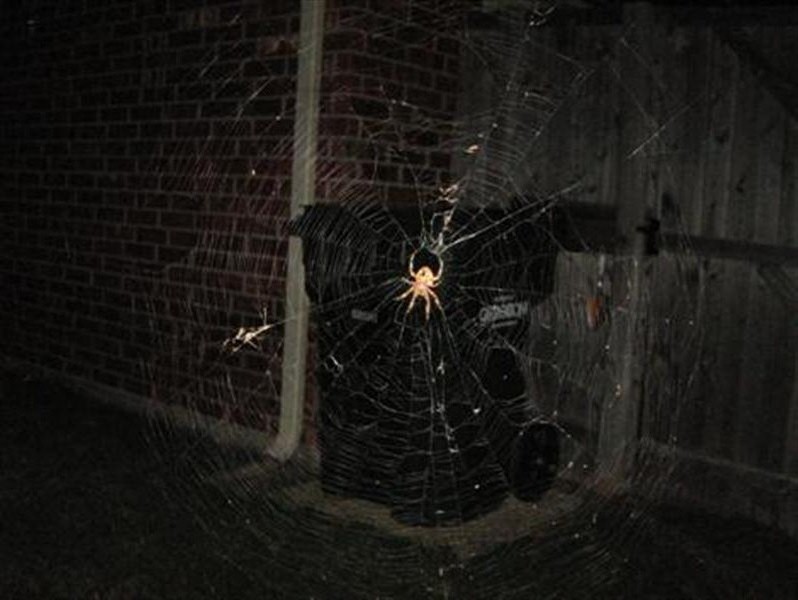












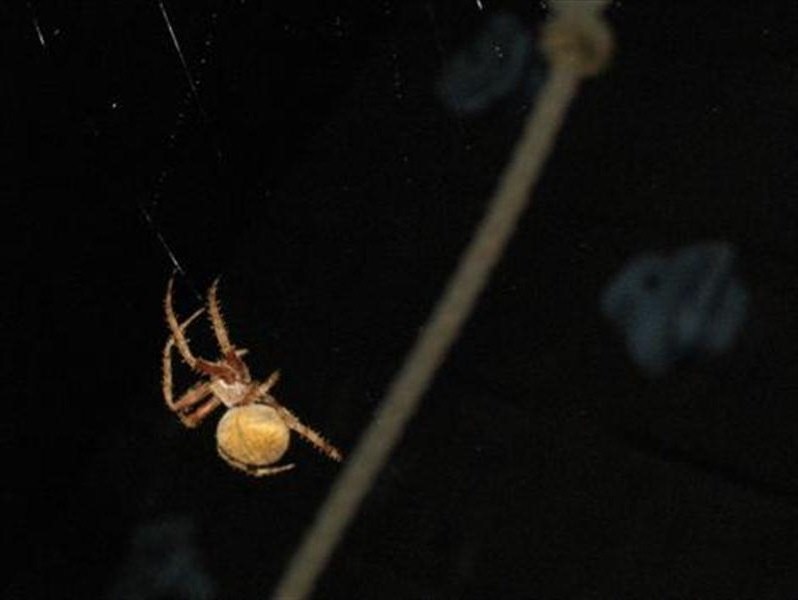
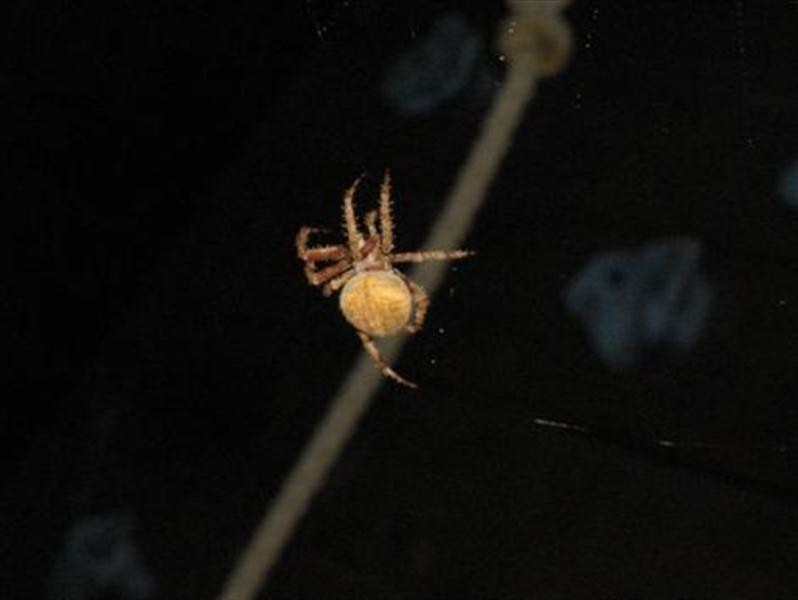



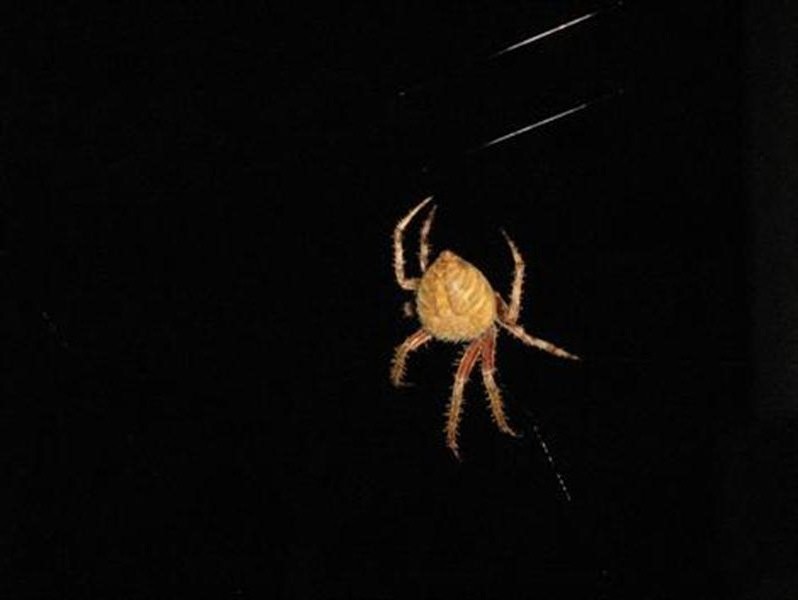



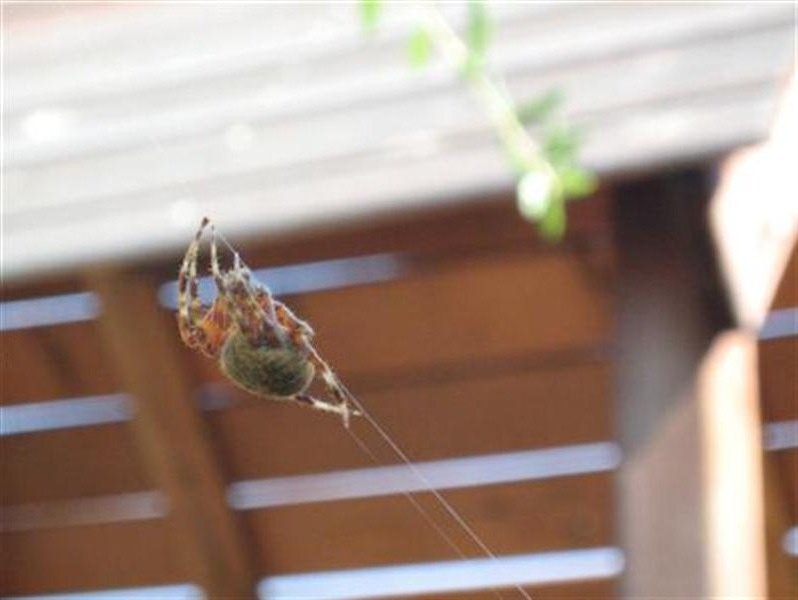






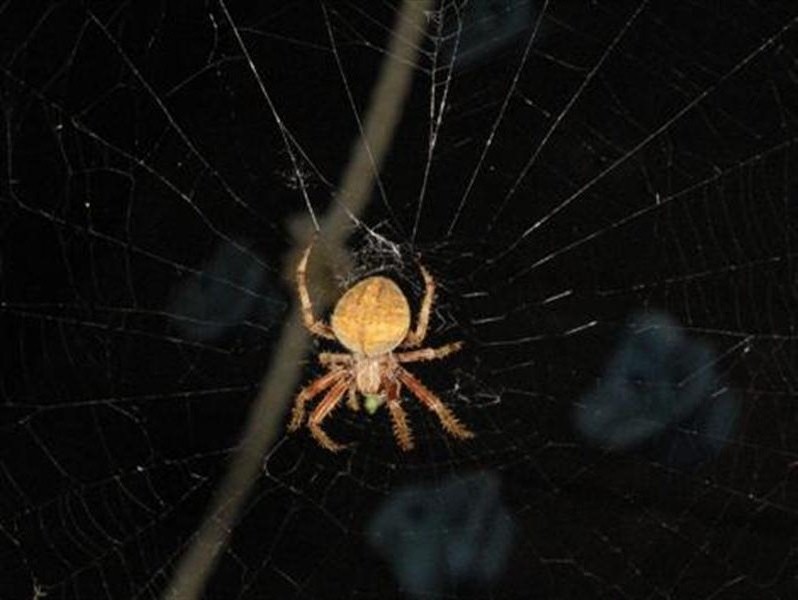

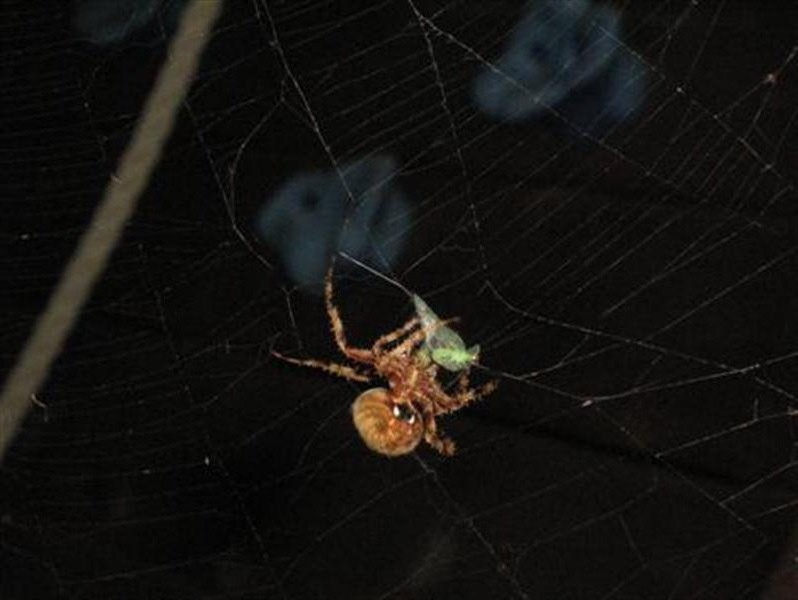


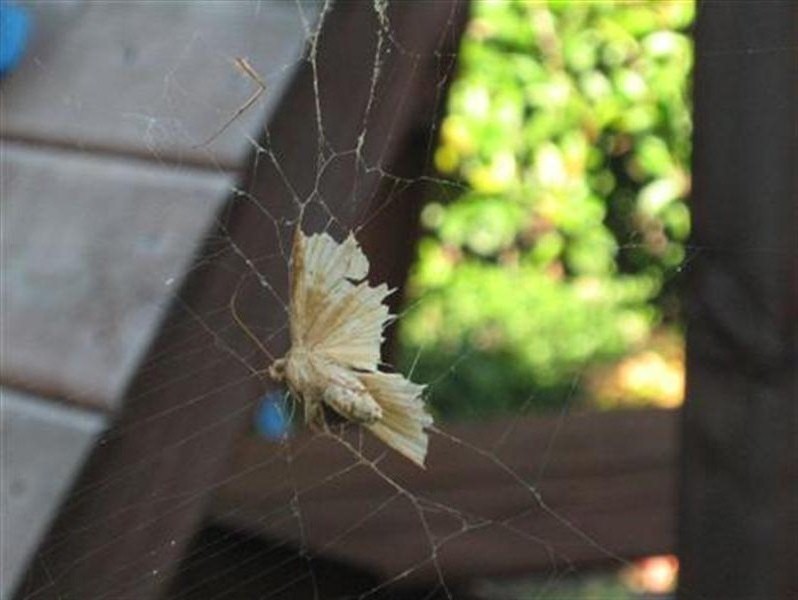




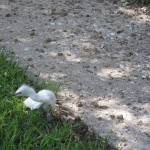
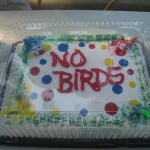


This is a terrific post. I have not yet ventured into the world of invertebrates – I can barely name most of the vertebrates I encounter! But I have been challenged by other naturalists to understand that insects, too, are wildlife. But there are so many species!! It really is overwhelming, and when the experts themselves are divided … well, that certainly makes positive i.d.s tough.
I also like hearing about the original impetus behind this wonderful website. Great work.
My name is Shelly Beasley and live in Akron, Alabama. I have found this spider at my boyfriend’s work shed and want to know if it is poisonous?